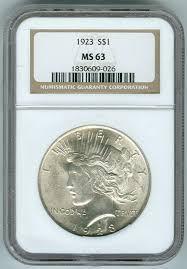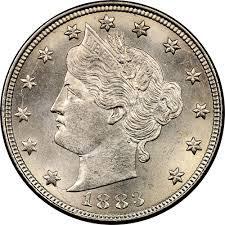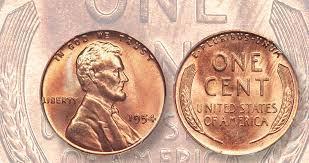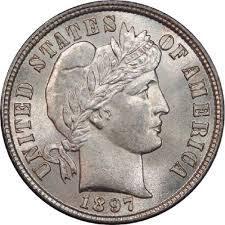This is posted mainly for my numismatic friends. It concerns crazy high prices being paid for coins based on increments of condition perfection that are actually meaningless. The “slabbing” mentioned refers to coins in sealed capsules whose authenticity and grade is assigned by certification services. A version of this piece was just published in Coin World, but much condensed, omitting some significant points (and, oddly, the first line). So here is my complete text:
This Emperor has no clothes.

Let’s start with what’s rational about coin prices. They’re keyed to rarity and quality.
Rarity is a matter of supply and demand. The fewer the examples available to desirous buyers, the higher they’ll bid the price up.
The quality factor might seem similarly straightforward: better quality brings a higher price. That’s true of any goods. Numismatics in particular entails an aesthetic aspect. Better condition coins are nicer to look at. Thus, “eye appeal.” But note the complication that beauty is in the eye of the beholder, and collectors differ in what attracts them. There’s also a pride-of-ownership factor. Our collecting is a reflection of ourselves. (In my own collecting of world and ancient coins, I’m something of a condition snob.)
The rarity and quality factors are synergistic: in general, higher quality is rarer. Though not always.

There is also the concept of “condition rarity” where a coin otherwise common is hard to find in the best grades.
In all such cases the price disparity is rational and understandable to anyone. But what about, say, MS-67 versus MS-66 for modern coins? PCGS may have graded ten times more 66s than 67s. Does that make 67 a condition rarity? Should the price be ten times that of 66? Let alone a hundred times or more?
Basic human psychology comes into play here. I’ve mentioned pride of ownership. There’s a part of us — especially men, and coin collectors are mostly men — that wants to be the best and have the best. We call it “bragging rights.” And there’s also competitiveness, the desire to beat out the other fellow and thump one’s chest.
I see this in my own auctions. Some guys just don’t like the idea of being outbid, as though it’s losing a competition, even a knock to their manhood. They will top someone else’s bid just for the sake of claiming a victory. Probably they don’t consciously think this way, it’s unconscious. But it sure helps my prices realized.

To be clear, 1954 is not even a scarce date. The bid price for MS-66 red is $55; though outside of a slab a BU, even if really nice, goes for maybe a buck. Meantime, for $31,200 you could literally buy a full roll of key date 1885 nickels — in Proof!
Something is seriously out of whack.

We must also remember that this is all ultimately about aesthetics. People do not need coins. We collect them only because it is in some way pleasing to do so. Upon this foundation a gigantic economic edifice has been built, but at the end of the day, coins have no value except insofar as they confer pleasure on their owners. (Thus I sometimes say in my auction catalogs, “Love your coins for what they are, not for what they’re worth.”)
We do, once more, pay higher for better quality coins because they confer more pleasure. Again a matter of how a coin looks to the eye. But distinguishing between MS-66 and MS-67 requires close examination under magnification with special lighting. Otherwise they look just about identical — apart from any toning, which may actually have a far bigger impact on visual appeal than the bare number grade. Moreover (as Q. David Bowers keeps reminding us), those numbers don’t take account of strike either, a big aspect of a coin’s true quality. Thus the number grades reflect what is really a peculiar sort of tunnel vision. And still further, the numbers falsely imply a sort of scientific precision, when in fact they are a matter of subjective judgement, upon which even experts typically disagree.

The original Sheldon scale contemplated just three quality levels for mint state coins (with one of them an almost impossible nirvana of perfection). Maybe a couple of finer differentiations would be reasonable. But expanding it to 11 (and even more, really, with pluses and Wings) stretched the concept of quality differentiation beyond what makes reasonable sense, given the subjectivity involved. Especially when a fetishistic obsession has emerged over distinguishing among inconsequential gradations of virtual perfection. This has sent U.S. numismatics down a rabbit hole pursuing an illusory holy grail (if I may mix my metaphors, and alliterate).
Advertisements